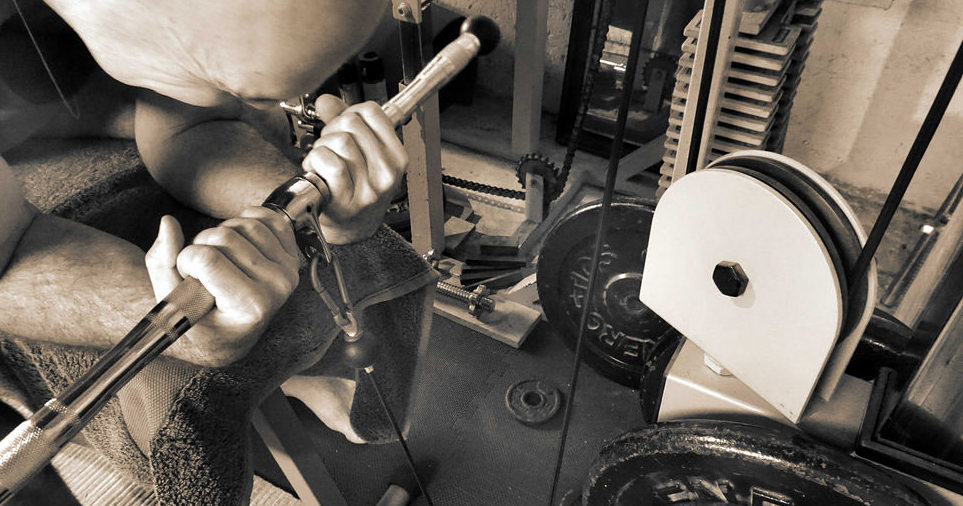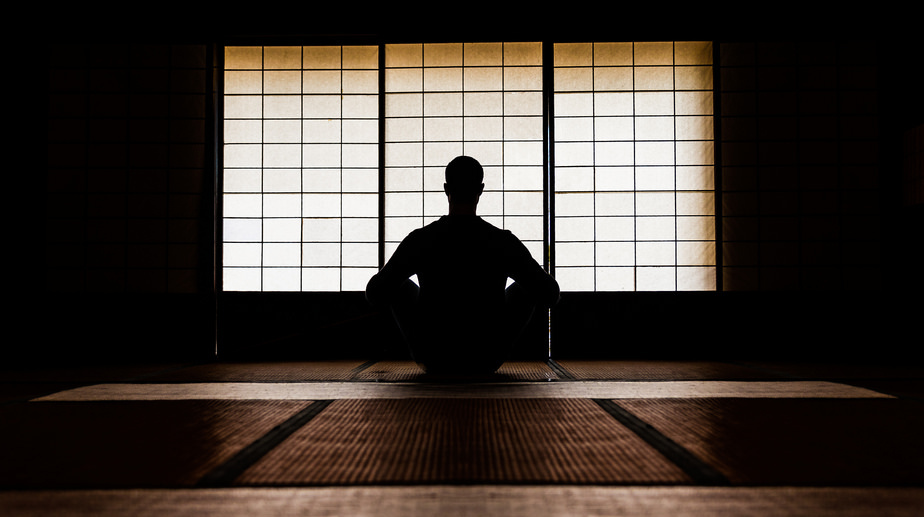Get into Meditation…Even If You’re The Worst
Most of us have considered meditation …
And that’s probably as far as it’s gone.
But there’s good reason to believe you need to get into meditation as soon as yesterday. And while I try not to be a very demand-y person in life (note: effort does not always correlate with success), I’m going to be that person right now, because maybe you just need it.
Meditation is lacking in your life. Yep, you. Yours. It’s lacking in your mind (hello, cluttered thinking!), it’s lacking in your body (hello, shallow breathing!), and it’s lacking in your relationships (hello, why do we keep fighting!).
Do us all a favor and read the rest of this post.
Since I began this quest to become a writer, my development as a scribe and thinker (second title is arguable) has been primarily influenced by three podcasters.
They’re amazing, and tend to interview amazing people in turn:
1. Jeff Goins
2. Tim Ferriss
3. Michael Hyatt
And there’s a common theme among this mashup of amazingness: the word “meditation” keeps popping up.
Not just popping up in passing, but coming up as a cornerstone of these people’s continued successes…
Of all the routines and habits, the most consistent among guests some form of daily meditation or mindfulness practice. More than 80% of the world-class performers I interviewed shared this trait…This applies to everyone from Arnold Schwarzenegger to Justin Boreta of The Glitch Mob, and from elite athletes like Amelia Boone to writers like Maria Popova. It’s the most consistent pattern of them all. –Tim Ferriss
I know I’m not the only one who keeps hearing about meditation. It’s not just podcasts talking about it—it’s magazine articles, news stories, blogs, daily conversations. Meditation is becoming cool. Expected, even. Something is going on here.
Sure, you can shrug it all off as hippy woo-woo, but sometimes it serves to pay attention to the little gifts the universe sets down.
As I endeavor to be this self-made writer type, I need all the mental resources I can get. Because there’s also the anxiety. Anxiety about failure, writing deadlines, general motivation (i.e., where is it?), etc.
If there’s this free, non-illegal, health-boosting, wonderpill that tons of people whom I respect say will make my life better no matter what, I’m buying in. I’m at least testing out.
The Meditation (Non) Practice
Look, I’ve always wanted to be a person who meditates. A person who casually shrugs off the fact that she meditates just as sure as she eats breakfast.
“Why sure, I meditate every day. I can’t bear to miss it.” (subtext: I mean just look at me I’m zen af.”)
But despite my desire, I’d never been able to pick up a consistent practice. At first, I figured that if I committed to 10 minutes a day, then within a month or two I’d “get” whatever it is one is supposed to “get” about meditation. As you might guess, that didn’t work.
Ten minutes felt exhausting, but more importantly: impossible. I quit. Over time, I tried a few more from the pool of meditation techniques for beginners:
-
Guided meditation tracks (most recently Oprah & Deepak’s meditation)
-
Youtube meditation videos
-
Silent meditation
-
Sleep meditations
-
Morning meditations
-
Meditation through yoga (which, although meditative, my thinking is that it shouldn’t be thought of as a two-birds-one-stone thing—at least until advanced levels)
-
Body scan meditation (focusing on specific parts of the body)
-
Mantra meditation
I would start off strong, maybe going for several days in a row. Sitting cross-legged on my bed or mat, I was open to that universe, man! But while I’d sit there, the discomfort crept in. The antsiness. The way everything would enter my mind except for whatever it is I’m supposed to be thinking or not thinking about.
Inescapably, it seemed, it was like making a hole in a pool of sludge . . . The words and thoughts would fill the gap as soon as it opened up.
Eventually I would throw in the towel . . . or just forget. I’d go 18 days straight doing the exact same thing every morning, and on the 19th day, it’s like none of it ever happened. After a few days, I’d remember that I’d been forgetting, but it generally didn’t feel worth a renewed effort. (please i want better brain.)
Getting into Meditation
(Even if You’re the Worst)
Finally, three months ago I was talking to my friend Mikey about how I would like to meditate, but it never works out for me. Mikey could relate, but he’d been finding success with this app called Insight Timer. Since he and I could connect on the app, I signed up with hopes that having someone out there might keep me feeling accountable over here.
On the first morning, I sat up, put some pillows behind my back, and set the timer to the sound of a babbling brook (how relaxing!) for three minutes. Three. No sprinting out the gate with ten this time. In this case (and maybe only this), I had learned from previous failures; three minutes was easy enough to wrap my arms around.
Not quite sure what to do with the time, I tired either to simply to keep my mind clear, or—when that wasn’t working—to repeat simple mantras (mantras seemed better than free-flowing thoughts). That’s right, I couldn’t do just one or the other, not even for three minutes. But I allowed this variation, and I didn’t call it a failure.
And it worked. Like cool water on a hot day, it was refreshing—not painful! Not embarrassing!
Three minutes didn’t feel like a struggle, so it was easy to revisit each morning.

After a week or two, the kangse bell that chimed when my time was up triggered a little tug in the pit of my stomach that seemed to be asking me to stay a while longer. One benefit of Insight Timer is that the track and timer will keep going until manually stopped, but the chiming will stop after just one notification, so you don’t have mess with your phone to turn off a “time’s up” alarm.
So, I followed the tug. In the days that followed, whenever it was there, I remained sitting. Maybe for 10 seconds, maybe more. When I began consistently staying for at least four minutes, I bumped the timer notification up to four.
Following the ebb and flow of my comfort levels, I continued to add minutes to the timer over time, but only when it positively felt right. It’s been about four months, and now when I wake up, almost immediately I feel the pull to meditate. It’s the type of pull I feel when I see a bowl of steaming macaroni and cheese or am craving a “beverage” after a long day—but this is a pull toward something healthy.
Now I’m at 20 minutes, and often I like to go longer. Healthy addiction all up in my mornings.
But Still: Why Meditate?
For many, the resistance to meditation boils down to this: What is the point, really?
Even me—I sat there every day, I knew it felt good … but I was worried it wouldn’t last because there were no measurable results. I was doing it because I heard it was good, and sure—it felt good—but still I wasn’t convinced.
It was our boy Dan Harris who finally locked it in for me. After I’d been meditating for about a month, I listened to an interview with him and crazy James Altucher. Dan is the newscaster notorious for having had a panic attack live on ABC World News Tonight, but is lately better-known for his 10% Happier project (and yes, the two things are related).
Here’s the gist: Meditation is called a practice for a reason. You’re practicing to be ready to play come game time.
What is the game? Daily life.
What is the practice? Handling it (well).
In daily meditation practice, the “exercise” is to keep our mind in a neutral, aware state. When thoughts fly in or emotions hit, we let them “flow past” while returning to baseline calm. According to Dan, this brain process of “trying to focus, getting lost, and starting over” is the equivalent of mental bicep curls.

We exercise the brain muscle so that it is stronger and better able to manage the spinning wheels of thoughts, emotions, and impulses. What are all our big beautiful thoughts and emotions if we’re only mere victims whenever they wish to strike? It’s great when these things are positive, but when they catch you in anger? Shame? Spite? Wouldn’t it be nice to just let them … flow past? To refrain from acting rather than react?
Bottom line?
You aren’t a “bad meditator” because you get easily distracted. The distractions are what you want! They are the weights to your weight training.
There, take a load off.
I suppose this style may specifically be called “mindfulness meditation,” but whatever we call it, it’s legit. Personal example: I used to be a very reactive person.
(Side note: Okay, I am still a pretty reactive person, but not as much as I used to be.)
Particularly in romantic relationships, a boyfriend might do something to trigger a strong emotion, and rather than stay calm -> think -> respond, my eyes would go black and I’d turn into Satan. Nobody wants to be like that (and I’m embarrassed to admit it) but there.
Imagine something for me:
You’re standing in a bar and suddenly a big burly fist is heading straight toward your pearly whites. Instinctively, you crouch and cover your head. When we are attacked emotionally, we sometimes react by just kind of freaking out. We roar at the fist instead of ducking.
Meditation retrains your mental instincts so that when you are about to get “hit,” your impulse is not to roar, but to duck.

Meditation and the Devil
To summarize:
Through meditation, I exercise my ability to return to a neutral state of awareness. It’s strength training; I let reactive thoughts flow past, and my ability to do so—particulaly in trying times—gets stronger with each rep.
Now, when something triggers me emotionally, before jumping into the wheel of reactivity, I’m often able to pause, go to neutral, and ask myself: “Can I stay peaceful? Can I keep the waves from crashing—just stay calm until I am better able to process it all?” And in that moment I may seem like a robot, but at least I am not terrifying. For now, if anything, it’s a way to buy myself time.
Getting into meditation is a way to bring awareness into our daily lives, both through the act itself and through its after-effects. Not all the time, but more often. enough to matter.
How much of your day do you feel like you’re just going through motions? Crossing items off lists? Making appointments? Scarfing down meals? Responding to texts?
We’re awake, sure, but can we call it an examined life? A mindful life? Isn’t it what we’re after—something more than going through motions? Even if your life is roses, you could probably stand for it to be even better. That is why we supersize things.
Just kidding. Don’t supersize things. Unless it’s emotional well-being. Mostly just that.
Hey, and if you’re still not convinced, I’m just going to leave this smorgasbord of meditation benefits data from The National Center for Complementary and Integrative Health here. Some other purportedly good meditation apps I haven’t tried are Headspace, Calm, or Dan Harris’ 10 Percent Happier.
Guided meditation helps a lot of people get started, but you might like to listen to ambient or white noise like I normally do.
Otherwise, what do you think? Are you buying any of this? I’m selling it for free—leave a comment!
Protocred: photopin.com


Simply beautiful. It tickles me to be able to have a good friend that can reap and channel the same benefits, yet articulate them as good a you do. Meditate-on…
The Mikey himself!
I’m always good for a tickle.
That sounds odd.
you never realize how many different thoughts you have until you try to meditate. Sometimes it’s like coming up for air when you didn’t even know you were drowning.
This is a beautiful way to put it!! It will open you to yourself and also open you to the things you’ve been hiding from yourself. Love it.